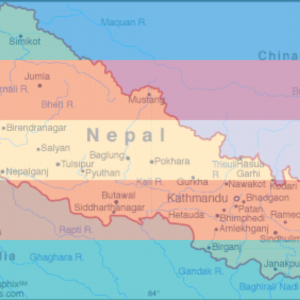
The political and legal development of LGBTQ+ rights in Nepal has been the result of two decades of protracted effort. It has uniquely positioned Nepal in terms of queer political visibility and alternative advocacy strategies in advancing the trans rights. While making a fair assessment of advocacy movements is difficult, the legal developments themselves are worth highlighting for the lessons they offer in the South Asian context of the right to gender identity.
The ground-breaking Sunil Babu Pant v. Nepal Government Supreme Court judgment of 2007 underscored that fundamental rights in Part III of the Nepalese (interim) Constitution are available to all “natural persons” including persons of the third gender. Consequently, it upheld the rights to freedom (Article 12), equality (Article 13), right to life (Article 12) and a right to privacy. On self-determination, the judgment upheld that individuals gender identity is to be determined by self-perception or “self-feeling” – not by the society, state, or law and without medical examination or intervention. It included the right to self-determination under the right to life and dignity of Article 12. The court also expanded this to include non-interference in the right to choose a marital or sexual partner.
The judgment directed the government to promulgate or amend existing laws to ensure the inclusion of persons of different gender identity and protect their rights under Nepal’s domestic and international legal obligations, particularly under Articles 2, 6 & 17 of the ICCPR i.e. protecting the right to self-identity.
Nepal’s new Constitution of 2015 is inclusive of LGBTQI identities. Article 18 (3) guarantees the right to equality and non-discrimination to “gender and sexual minorities”. Article 12 requires the citizenship certificates to include “gender identity” (as opposed to just gender). Article 42 upholds the right to “social justice” for sexual and gender minorities i.e. right to participate in state bodies and affirmative measures.
Meanwhile, Nepal made some progressive developments on trans empowerment, though their implementation is in question. An “other” or “O” gender category was included in the forms for census data collection and immigration forms, similarly for passports and citizenship certificates. Nevertheless, these options only allowed registration as “transgender” and not the self-chosen gender identities of male or female (as upheld in Pant). In 2o15 the Supreme Court directed (Dilu Dibuja v. the Ministry of Foreign Affairs) the government to issue passports in accordance citizenship certificates, although change of name and gender in the citizenship certificates was allowed only after another directive (Sunil Babu Pant and others v. Government of Nepal ) in 2017.
Despite these commendable initiatives, trans and gender non-conforming persons have cited bureaucratic inefficacy and insensitivity as a serious obstacle in obtaining documents. Non-binary persons also note the inadequacy of these gender categories in addressing their experience or accounting for non-binary pronouns.
The government also seems unsure about the “others” category – where in 2012 the Ministry of Home Affairs asserted that it includes all LGBTI persons. Similarly, the 2021 Census of Nepal will expect all LGBTQI persons to count themselves under this category as well.
This also does not detract from the facts that the “others” category does not include intersex persons, sex work is still illegal in Nepal and no anti-discrimination or rape laws exist to protect trans and gender non-conforming persons. As of 2020, a proposed amendment to Nepal’s citizenship laws could require medical examination to “prove” gender identity.

